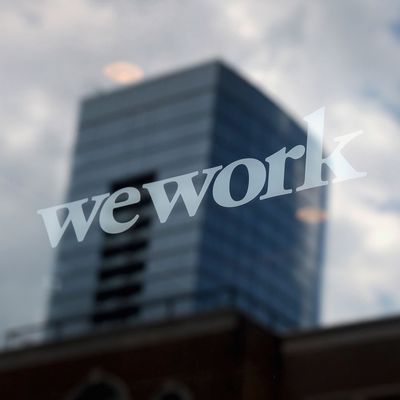
One of the many problems at WeWork is that it doesn’t really own much of value. It’s a real-estate company with no real estate. The company has extensive lease obligations to the landlords who actually own the buildings where it operates; its main offsetting asset is future revenue from WeWork members, but the size of that “asset” is highly speculative and not enough to make the company profitable in the present. A lender or an equity investor cannot be terribly confident about relying on the promise of sufficient future revenues to cover the company’s expenses.
Nonetheless, WeWork sold $702 million worth of bonds last year at an interest rate of 7.875 percent. At the time, The Wall Street Journal reported that potential bond investors were concerned about WeWork’s “minimal assets, sizable lease obligations, negative cash flow and strategic challenges as the company expands beyond high-rent cities like New York and San Francisco,” but were nonetheless “comforted by the support it has won from equity holders such as SoftBank Group.” Of course, all those aforementioned challenges remain, while SoftBank has sharply revised down the value it’s willing to ascribe to WeWork, plus the company has been losing even more money and is facing a preliminary investigation by the SEC. As such, the value of those bonds has crashed, and they are now yielding 16 percent. Oops.
It’s not impossible to build a successful real-estate company that owns little or no real estate. Most prominently, major hotel companies like Marriott and Hilton have mostly stopped owning real estate, and they have sustainable, high-margin businesses. But there are key aspects of their business model that WeWork, to its peril, has not adopted.
Hotels are typically considered a highly risky kind of real estate because the tenants (that is, the guests) have very short lease terms (one day). WeWork is not quite like an office hotel — while very short terms are available, the company said in its ill-fated IPO filing that the average term of its membership agreements is now 15 months — but that’s still much shorter than the multi-year leases WeWork signs with its landlords, which means the company faces the same risks as hotels: that economic circumstances will change, its customers will decline to renew, and it will be stuck with long-term obligations it can’t afford.
That sort of mismatch would be a huge problem for hotel companies if they were structured like WeWork. If hotel chains avoided ownership of real estate by signing master lease agreements for entire hotel buildings and then subleasing them to guests by the room, they’d often go bankrupt in recessions. But that’s not how hotel chains work. Typically, individual hotels get their brand identity in one of two ways: Either the hotel owner pays a franchise fee to a company like Marriott in exchange for the right to use Marriott’s branding and reservation system; or it pays a management fee, in which case the hotel chain doesn’t just provide branding but actually runs the hotel. In either case, the ups and downs of the hotel’s income and expenses are largely borne by the hotel property’s actual owner, not by the hotel chain.
It is possible to imagine a version of the WeWork business structured more like Marriott: If an office building owner wanted a WeWork in his building, he could enter a franchise agreement or management agreement with WeWork in exchange for access to the company’s branding and technology and member network; build out the office space at his own expense; and keep all the revenue for himself, minus whatever cut is due to WeWork under the franchise- or management-agreement terms. This would leave the real-estate risk in the hands of the real-estate owner, while leaving WeWork to be the asset-light service provider it claims to aspire to be.
So why isn’t WeWork structured this way? Maybe it could and should be. But maybe it isn’t because the office-building owners wouldn’t find the proposition the least bit attractive. After all, a landlord can just lease raw office space to traditional tenants. A WeWork franchise model would impose three major additional expenses for the landlord: A slick interior build-out, significant operating costs, and a franchise fee. WeWork’s valuable innovation is finding a way to cram more workers into less space while getting them to pay high prices because they love the free cold brew, but the rental income per square foot would have to be quite a lot higher to cover those three costs, plus compensate the building owner the added risk associated with short-term leases that workers can give up in a recession in favor of working from their couches at home.
WeWork’s existing model (leasing to sublease) may have appealed to landlords who would never have signed up for a franchise because WeWork took on so much of the risk — WeWork paid for the build-outs and hoped they would generate high rents; WeWork promised to keep paying an agreed rent even if property performance should worsen in the future; WeWork still paid a high enough rent to compete with traditional tenants who could have leased the same space. In other words, the landlords were willing to participate in a business with a bad risk-reward ratio because someone else was taking on the costly risks.
If that’s the explanation, it does not bode well for the company’s fate now that SoftBank is nearly sick of losing money. If it doesn’t make sense for anyone to bear the business’s costs and risks, then the business doesn’t make sense.





























